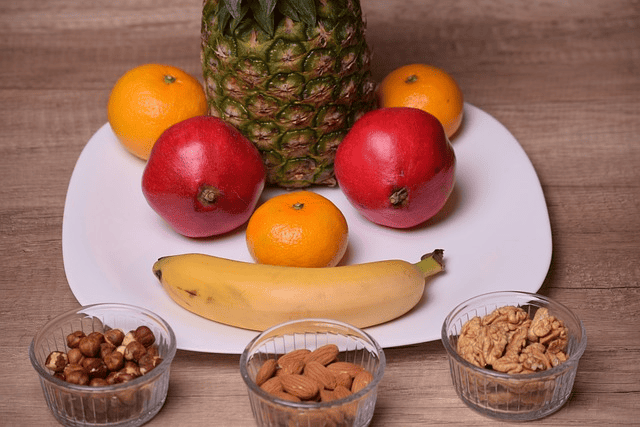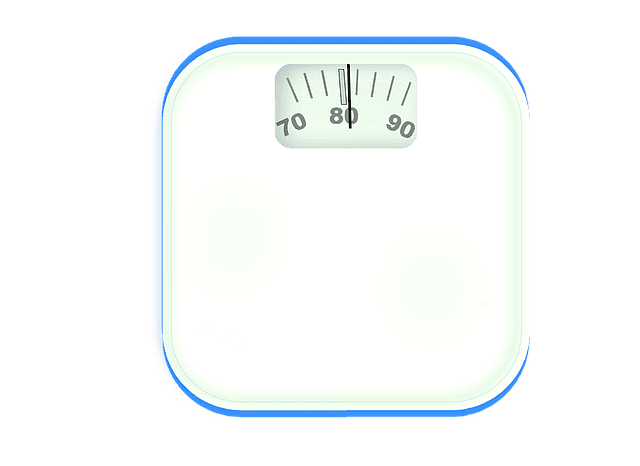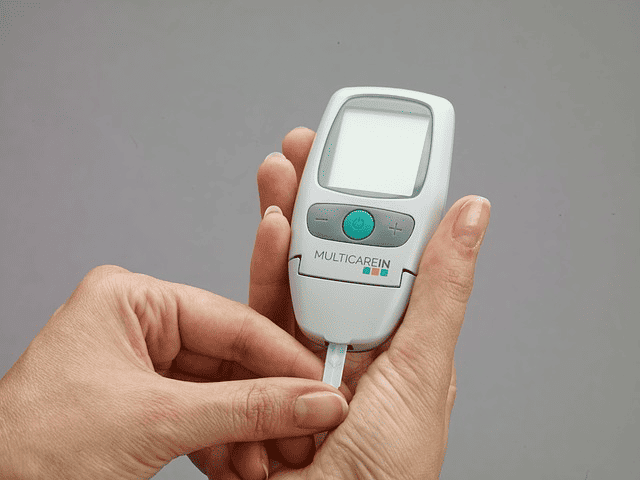Are you struggling with insulin resistance and searching for a natural way to reverse this condition? Look no further! Today we’ll explore 14 natural ways reverse insulin resistance naturally and reclaim your health.
These methods focus on lifestyle changes, including diet, exercise, and stress management, that can help improve insulin sensitivity and reduce the risk of developing type 2 diabetes and heart disease. So, let’s dive in and discover the steps you can take to regain control of your blood sugar levels.
Key Takeaways
-
Understand insulin resistance risk factors and take steps to improve sensitivity through lifestyle changes.
-
Incorporate soluble fiber, low-glycemic index carbs, antioxidant-rich foods into diet. Exercise regularly & reduce stress levels.
-
Monitor blood sugar levels & collaborate with healthcare professionals for long term maintenance of healthy lifestyle habits.
Understanding Insulin Resistance

Insulin resistance, also called impaired insulin sensitivity, occurs when cells become less sensitive to insulin, leading to increased blood sugar levels and a higher risk of type 2 diabetes and heart disease. This condition can be influenced by various lifestyle factors such as:
-
Dietary choices
-
Physical inactivity
-
Stress
-
Inadequate sleep
Improving insulin sensitivity and decreasing insulin resistance is achievable through conscious decisions and by adopting healthy habits. Understanding the root causes and risk factors is the first step towards reversing insulin resistance.
Identifying Risk Factors

Insulin resistance occurs for many reasons. Some potential risk factors for developing insulin resistance may include:
-
Genetic predisposition
-
Lifestyle choices
-
Obesity
-
Lack of physical activity
Even individuals who are not overweight or obese may experience insulin resistance, making it crucial to be mindful of the foods we consume and our daily activities.
Preventing and managing insulin resistance involves:
-
Regular physical activity
-
Meeting a daily step goal
-
Ensuring enough sleep
-
Stress management
Working with healthcare professionals can provide personalized advice on dietary and lifestyle modifications to address insulin resistance.
Diet and Nutrition Strategies

A well-balanced diet plays a crucial role in reducing insulin sensitivity and preventing and managing insulin resistance.
Incorporating specific food groups, such as soluble fiber, low-glycemic index carbohydrates, and antioxidant-rich foods, can support insulin sensitivity, reduce blood sugar spikes, and reduce insulin resistance.
These dietary strategies can significantly contribute to improved insulin sensitivity, and we will examine each of them.
Prioritize Soluble Fiber
Eating foods high in soluble fiber can help increase insulin sensitivity. Soluble fiber is a type of dietary fiber that can be found in certain foods. These include:
-
Oats
-
Beans
-
Lentils
-
Various fruits and vegetables
This type of fiber can help reduce insulin resistance by forming a gel-like substance in the digestive tract, which slows down the breakdown of food and absorption of nutrients, including sugar, thereby preventing sudden increases in blood sugar levels.
Some examples of soluble fiber-rich foods include black beans, lima beans, Brussels sprouts, avocados, sweet potatoes, broccoli, turnips, and pears.
Opt for Low-Glycemic Index Carbs
Low-glycemic index (GI) carbohydrates are those that are broken down slowly by the body, resulting in a gradual and limited increase in blood sugar levels.
Consuming low-GI carbs can improve insulin sensitivity by moderating the release of sugar into the bloodstream, and blood sugars and allowing insulin more time to work effectively.
Distributing carbohydrate intake evenly throughout the day is another method to enhance insulin sensitivity. Examples of low-GI carbs include:
-
Whole grains
-
Legumes
-
Non-starchy vegetables
-
Most fruits
Incorporate Antioxidant-Rich Foods
Antioxidant-rich foods can help improve insulin sensitivity by minimizing oxidative stress and inflammation in the body. Consuming colorful fruits and vegetables, which are rich in antioxidants, can help bind to and neutralize free radicals that can cause inflammation throughout the body.
Some examples of antioxidant-rich foods include:
-
Dark chocolate
-
Pecans
-
Blueberries
-
Strawberries
-
Artichokes
-
Goji berries
-
Apples
-
Avocado
-
Berries
-
Cocoa
-
Cruciferous vegetables
-
Green tea
-
Mushrooms
-
Nuts
Exercise and Physical Activity

Managing insulin resistance and enhancing insulin sensitivity necessitates regular exercise. Incorporating a variety of exercises, such as aerobic activities, resistance training, and flexibility exercises, can help enhance the body’s ability to utilize glucose for energy and maintain overall health.
We will examine how each type of exercise contributes to improved insulin sensitivity.
Aerobic Exercise
Aerobic exercise, also known as cardiovascular exercise, is any form of physical activity that elevates heart rate and respiration rate. It can assist in increasing insulin sensitivity by enhancing the body’s capacity to utilize glucose for energy. Examples of aerobic exercises include:
-
walking
-
jogging
-
running
-
swimming
-
cycling
-
dancing
Aim to incorporate at least 150 to 300 minutes of moderate-intensity aerobic activity per week, as recommended by the Physical Activity Guidelines for Americans.
Resistance Training
Resistance training is a form of exercise that utilizes weights or other resistance to build strength and muscle mass. Increasing lean muscle mass can help improve insulin sensitivity, as it is more metabolically active than fat tissue.
Examples of resistance training exercises include weight lifting, bodyweight exercises, and resistance band workouts. Incorporate resistance training into your exercise routine at least two to three times per week for optimal results.
Flexibility and Balance Activities
Flexibility and balance activities can contribute to increased insulin sensitivity by enhancing flexibility, reducing stress, and avoiding muscle soreness. Examples of flexibility and balance activities include:
-
Yoga
-
Pilates
-
Tai chi
-
Stretching exercises
Incorporating these activities into your exercise routine can help improve overall health and support insulin sensitivity.
Sleep and Insulin Sensitivity

Maintaining insulin sensitivity and preventing insulin resistance requires sufficient sleep. Insufficient sleep has been linked to insulin resistance due to its disruption of hormones that regulate glucose metabolism.
Aim for at least 7 to 9 hours of sleep per night to ensure proper hormone regulation and support overall health.
Stress Management Techniques

High levels of stress hormones can result in insulin resistance, making stress management an essential component of reversing this condition.
Techniques such as mindfulness meditation, deep breathing exercises, and engaging in relaxing hobbies can help reduce stress and improve insulin sensitivity.
Mindfulness Meditation
Mindfulness meditation is a form of meditation that emphasizes being conscious of the present moment and accepting it without criticism. Practicing mindfulness meditation can have several benefits, including:
-
Reducing stress
-
Improving overall health
-
Decreasing blood pressure
-
Improving sleep quality
To practice mindfulness meditation, follow these steps:
-
Find a comfortable and tranquil environment.
-
Focus on your breath, paying attention to each inhale and exhale.
-
Allow your thoughts to pass without judgment, simply observing them without getting caught up in them.
-
Utilize guided meditations or mindfulness applications to help you get started and incorporate meditation into your daily routine.
Deep Breathing Exercises
Deep breathing exercises are a form of relaxation technique that involves taking slow, deep breaths in and out. They can help reduce stress levels and enhance insulin sensitivity by assisting in lowering blood sugar levels.
To perform deep breathing exercises, follow these steps:
-
Sit in a comfortable position with your eyes closed.
-
Inhale deeply through your nose for a count of four.
-
Hold your breath for a count of four.
-
Exhale slowly through your mouth for a count of four.
Repeat this process for several minutes and engage in deep breathing exercises for at least 10 minutes per day to reduce stress and enhance insulin sensitivity.
Engaging in Relaxing Hobbies
Incorporating relaxing hobbies into your daily routine can help reduce stress levels and improve insulin sensitivity. Examples of relaxing hobbies include:
-
Meditation
-
Gentle Yoga
-
Knitting
-
Gardening
-
Painting
-
Adult coloring books
Choose activities that you enjoy and make them a regular part of your stress management routine.
Weight Loss and Insulin Resistance

Weight loss, or body fat, particularly in the waist and abdomen area, can aid in reversing insulin resistance and boosting insulin sensitivity. Weight loss has numerous advantages for insulin resistance, including:
-
Increased insulin sensitivity
-
Lower blood glucose levels
-
Decreased likelihood of type 2 diabetes
-
Improved metabolic health
-
Augmented cardiovascular health
Implementing the lifestyle changes discussed in this blog post, such as adopting a healthy diet, engaging in regular exercise, and managing stress, can help you lose weight and improve insulin resistance.
Herbs, Spices, and Natural Supplements

Incorporating herbs, spices, and natural supplements into your daily routine can help improve insulin sensitivity and decrease insulin resistance. Some beneficial ingredients include:
-
Cinnamon
-
Turmeric
-
Green tea
-
Apple cider vinegar
We will examine the advantages each of these natural remedies offers.
Cinnamon and Turmeric
Cinnamon has been known to enhance glucose and insulin levels, augment insulin sensitivity, diminish insulin resistance, potentiate insulin action, and insulin production, and reduce blood sugar levels.
Turmeric, on the other hand, may reduce inflammation, augment insulin sensitivity, and reduce oxidative stress, potentially reversing insulin resistance.
Incorporate cinnamon and turmeric into your diet as supplements, teas, powders, or by adding them to meals or snacks for maximum health benefits.
Green Tea and Apple Cider Vinegar
Green tea contains a powerful antioxidant called epigallocatechin gallate (EGCG), which has been shown to potentially increase insulin sensitivity and reduce blood sugar levels.
Apple cider vinegar, on the other hand, has been shown to reduce blood sugar levels and enhance the efficacy of insulin, thereby potentially increasing insulin sensitivity.
Incorporate green tea and apple cider vinegar into your daily routine by drinking them as beverages or using them as salad dressings.
Fenugreek and Ginger
Fenugreek and ginger have been shown to be beneficial in reducing insulin resistance, lowering blood sugar levels, and improving cholesterol levels. Incorporate fenugreek and ginger into your diet by consuming them as teas, capsules, or powders.
Keep in mind that some individuals may experience digestive distress, nausea, and headaches when consuming fenugreek and ginger, so consult with your healthcare professional before incorporating them into your routine, especially if you have a history of digestive and kidney diseases.
Monitoring Blood Sugar Levels

Consistent blood sugar level monitoring helps in the following ways:
-
Identifying potential insulin resistance problems
-
Facilitating early intervention
-
Tracking progress
-
Making necessary adjustments to lifestyle changes.
Utilize a glucometer or consult with your healthcare professional to order a fasting blood glucose test or oral glucose tolerance test to monitor your blood sugar levels and detect any signs of elevated blood sugar.
Creating a Supportive Environment

Creating a supportive environment with friends, family, and healthcare professionals can help maintain motivation and accountability throughout your journey to reverse insulin resistance. Engage in open dialogue about your health objectives, request assistance when necessary, and establish a support network to help maintain progress.
Establishing a robust relationship with healthcare professionals ensures personalized advice and support throughout your journey of managing insulin resistance.
Collaborating with Healthcare Professionals

group of professional medical team closeup
Collaborating with healthcare professionals ensures a personalized approach to managing insulin resistance and making appropriate lifestyle changes. Schedule regular check-ups, discuss your health objectives, and ask any questions you may have about your health.
Request referrals to specialists or nutritionists for additional assistance in managing insulin resistance.
The Role of Medication

While medication may be necessary for some individuals to manage insulin resistance, it should be used in conjunction with lifestyle changes.
Before taking any supplements or medications to increase insulin sensitivity, consult with your healthcare professional to ensure they are appropriate for your specific needs.
Keep in mind that lifestyle modifications like adopting a healthy diet, doing regular exercise, and managing stress levels are vital in preventing and managing insulin resistance, as they do not promote or increase insulin resistance itself.
Long-Term Maintenance
The prevention and management of insulin resistance, as well as overall health maintenance, hinge on long-term lifestyle changes. Strategies for maintaining these changes include:
-
Adhering to a nutritious diet
-
Engaging in regular physical activity
-
Obtaining adequate rest
-
Controlling stress levels
-
Reducing weight if necessary
Monitoring high blood pressure and sugar levels and having a supportive environment will also help ensure that you can maintain the lifestyle changes necessary to reverse insulin resistance.
Summary
Reversing insulin resistance naturally involves a combination of lifestyle changes, such as adopting a balanced diet, engaging in regular exercise, managing stress, and maintaining a healthy weight.
With the support of friends, family, and healthcare professionals, you can take charge of your health and improve insulin sensitivity.
Remember, the journey to reverse insulin resistance is a lifelong commitment, but the benefits are well worth the effort. So, take the first step today and embark on a healthier, happier future.
Frequently Asked Questions
How can I fix insulin resistance naturally?
To reverse or manage insulin resistance naturally, consider reducing carbohydrate and sugar intake, increasing fiber, protein, and magnesium intake, swapping out saturated and trans fats for healthy ones, and adding health-promoting foods to your diet. Additionally, regular exercise, adequate sleep, and taking dietary supplements can help improve insulin sensitivity.
What are some common symptoms of insulin resistance?
Insulin resistance can cause high blood sugar levels, fatigue, frequent urination, and increased thirst.
How can I incorporate more soluble fiber into my diet?
Incorporate more soluble fiber into your diet by including oats, beans, lentils, and certain fruits and vegetables in your meals and snacks.
Are there any specific exercises I should focus on to improve insulin sensitivity?
Regularly performing aerobic, resistance training, and flexibility exercises can help with weight gain and improve insulin sensitivity.
How much sleep should I aim for each night to maintain insulin sensitivity?
To maintain insulin sensitivity, aim for 7-9 hours of sleep per night.
